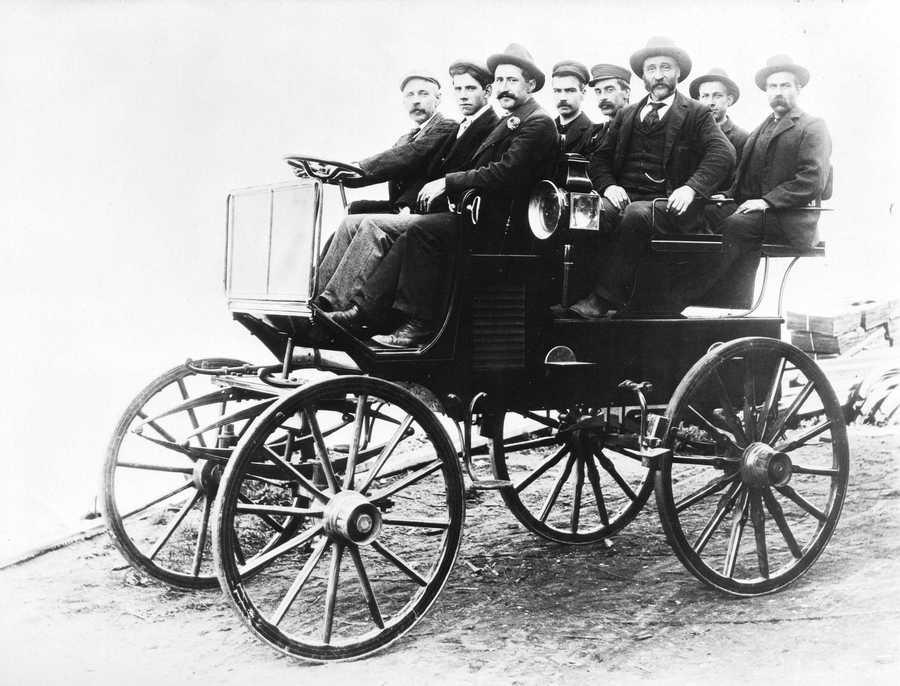Learn more about moneyandinvestments with this collection
Strategies for building self-confidence
Techniques for embracing your strengths and accomplishments
Tips for seeking support and feedback
Two of the biggest innovations
Two of the biggest innovations of modern times are cars and airplanes. At first, every new invention looks like a toy. It takes decades for people to realise the potential of it.
- Adolphus Greely, a brigadier general, was one of the first people outside the car industry to consider the usefulness of a "horseless carriage." He bought three cars in 1899 for the U.S. Army to experiment with. It was envisioned to be used as transportation of light artillery such as machine guns, to carry equipment, ammunition, and supplies.
- The Wright brothers saw the prospects of their new flying machine to be used as a reconnoitering agent in a time of war. The U.S. Army purchased the first "flyer" in 1908.
202
1.49K reads
Innovation is driven by incentives
There are three types of incentives:
- "If I don't figure this out, I might get fired." It will get you moving.
- "If I figure this out, I might help people and make a lot of money." It will produce creativity.
- "If we don't figure this out now, our very existence is threatened." Militaries deal with this, and it will fuel the most incredible problem-solving and innovation in a short time.
During World War II, there was a burst of scientific progress that took place. The government was in effect saying that if a discovery had any possible war value, then it had to be developed and put in use, regardless of the expense.
257
1.27K reads
The conditions for big innovations to happen
The biggest innovations seldom happen when everyone's happy or safe. They happen when people are a little panicked and worried, and when they have to act quickly.
In 1932, the stock market fell by 89%. It was an economic disaster where almost a quarter of Americans were out of work. However, the 1930s was also the most productive and technologically progressive decade in history. Economist Alex Field writes that in 1941, the U.S. economy produced almost 40 percent more output than it had in 1929, with little increase in labor hours or private-sector capital input.
224
1.06K reads
Big innovations of the 1930s
- While the 1920s were the era of the automobile, the construction of roads took off in the 1930s with multilane engineering marvels, including the George Washington, Golden Gate, and Bay Bridges, cutting travel times.
- Electrification surged in the 1930s. Power was brought to farms. Electricity turned from luxury to a necessity.
- Electricity became a servant to washing machines, vacuum cleaners, and refrigerators, freeing up hours of household labor.
- The first supermarket opened in 1930.
- Productivity growth in the 1930s took place in utilities, farming, wholesale trade, retail, transportation, mining, and communication.
- More young people stayed in school because they had nothing else to do, resulting in a surge in high school graduation and college graduates.
208
847 reads
Innovation during stressful times
The big technical leap of the 1930s could not have happened without the devastation of the depression. However, there is a limit to stress-induced innovation: The foundations of the economy itself should remain intact to support new ideas and innovations.
This balance between a disturbance in the economy, while the foundations of the economy remain intact, has only happened a few times in modern history: the period from 1930 to 1945 and in 2020.
195
805 reads
Innovations trigger more innovations
Innovations usually begin with an attempt to solve a specific problem, but they end up triggering other changes that would have been very difficult to predict. An innovation in one field ends up encouraging changes in different domains.
- Right now, many biotech companies are focused on finding a solution to one virus. It could create a fertile ground for new medical discoveries, new manufacturing and distribution methods, a newfound respect for science and medicine.
- A shift to remote work could make cities more livable and rural areas more prosperous.
- The value, price, and product of education have fundamentally shifted, creating new opportunities in delivering affordable education.
208
851 reads
CURATED BY
More like this
9 ideas
In a nutshell: the Great Depression
historyextra.com
4 ideas
Lots of Overnight Tragedies, No Overnight Miracles
collaborativefund.com
3 ideas
Read & Learn
20x Faster
without
deepstash
with
deepstash
with
deepstash
Access to 200,000+ ideas
—
Access to the mobile app
—
Unlimited idea saving & library
—
—
Unlimited history
—
—
Unlimited listening to ideas
—
—
Downloading & offline access
—
—
Personalized recommendations
—
—
Supercharge your mind with one idea per day
Enter your email and spend 1 minute every day to learn something new.
I agree to receive email updates

